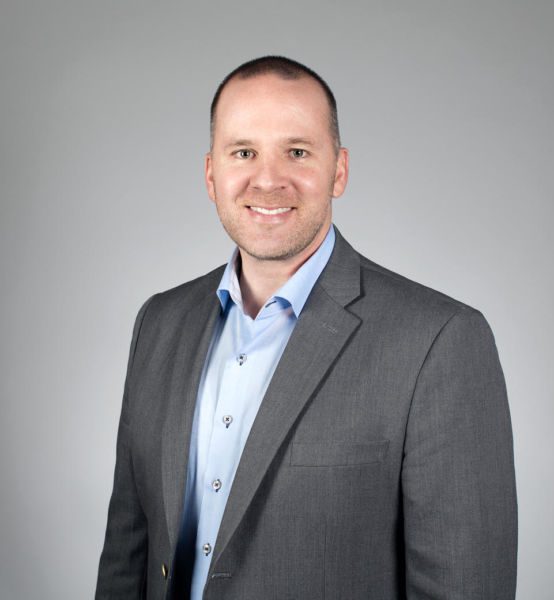The cannabis retail industry is largely defined by its youth; players in the newly legalized CBD and cannabis industries haven’t had decades to build their shopper bases like Walmart or Costco. This means most dispensaries have started building their brands from scratch — but now High Times is opening dispensaries in Los Angeles and Las Vegas, bringing with it more than 40 years of advocacy, events and loyalty.
The media company’s leap into brick-and-mortar is being spearheaded by two executives with a wealth of retail experience: Stormy Simon, CEO of High Times, spent 15 years at Overstock.com (including two years as President) before departing e-Commerce to enter the cannabis industry. Paul Henderson, President of High Times, is the former CEO of Grupo Flor, where he oversaw one of the top-selling dispensaries in the U.S.
In this exclusive interview with Retail TouchPoints, the two High Times executives discuss their histories and plans for the future of cannabis, including:
- How Henderson’s prior experience in cannabis retail will influence store design and operations;
- The ways Simon’s time at Overstock.com may mirror growth in the cannabis industry;
- How High Times is leveraging its decades of experience and loyalty-building to kickstart its retail growth;
- The reasons Los Angeles and Las Vegas are the epicenters of the up-and-coming legal cannabis market.
Retail TouchPoints (RTP): Grupo Flor’s store, East of Eden, has grown to become one of the top-selling stores in the country. What lessons have you learned from operating a high-traffic dispensary, and how will you apply these learnings to High Times’ new venture?

Paul Henderson: The first thing is that these are traditional retail stores. It’s easy to say that, but it’s hard in practice. A lot of cities limit where they will allow cannabis retail stores with real estate zoning restrictions. The key is to find a city that actually allows for retail stores to be in high traffic zones. East of Eden is right off Highway 101, which is a major artery running north and south through California. That was the number one thing: this is retail, it’s consumer packaged goods, and these stores need to be in the way of the day-to-day lives of our customers — and everybody you can think of is our customer.
Number two is that you have to have a good experience for different types of shoppers. The old school model was that people would come in and wait in a waiting room, and the whole process of shopping for cannabis sometimes took 30 to 40 minutes. We really wanted to master getting people in and out very quickly if they already knew what they wanted. They’re able to spend as much time as they want — to be educated, ask questions and look around — but if you walk in and you know what you want, you can get out quickly. We created a model that allowed consumers to be in and out of the store with their purchase in as little as three minutes. Then word got out and that’s become a very big selling point.
The last two items are a wide product selection, really allowing people to explore with different brands, and incredible customer service. We spent a lot of time training staff, having them go to seminars and helping them really understand the medical benefits of cannabis so they can help shoppers. The Salinas, Calif. area has a really high population of elderly people, so we had a large customer base that were exploring products like topicals to treat certain ailments.
Those are the four categories that really worked well in Salinas, and honestly, they translate perfectly into what we’re doing now. I see us replicating a lot of those major components here with High Times in our branded stores.
RTP: Stormy, you had a long career at Overstock before joining the cannabis industry. Why did you choose to make the leap from e-Commerce to cannabis?

Stormy Simon: I have a passion for the plant, so I’ve always been curious about cannabis. I think my time at Overstock — developing it over the years, getting addicted to that innovation and walking into a room and not really knowing what tomorrow brings — is what the cannabis industry is going through now.
I’d been at Overstock for 15 years, starting when it was $18 million and seeing it through until it was almost $2 billion. Through that time, I had many different careers within that career, and I built many different departments.
In the meantime, we’re seeing states recreationally legalize cannabis, and it sparked my attention, literally. When you think of cannabis going through this transition of a state-by-state legalization, and not knowing what’s going to happen federally, it just felt like something I wanted to participate in and be a part of.
RTP: How did your time at Overstock help prepare you for your new role at High Times?
Simon: While cannabis can’t be sold online, there are digital ways that it touches consumers. We talked about the amount of High Times social engagement online, including the web site traffic and the content that we deliver with editorial and events. Taking all of that and bringing it together under one brand creates a consumer experience that may start online, but follows you throughout every step of your High Times journey.
There are also many things we can sell online. We can ship you a T-shirt or magazine. Everything digitally that I’ve ever touched at Overstock absolutely applies here today, including online brand building, which absolutely will feed the retail stores.
RTP: High Times is a well-established brand entering a market filled with newcomers. What advantages do you expect this to offer your stores?
Simon: I think we’re trusted when it comes to educating people about cannabis. For more than 40 years we were the only ones doing that, and everybody smiles when you mention High Times. They have a High Times story from high school or college, or an experience with cannabis, and High Times was the only source of education and a message that didn’t include a stigma. Because of that, I think we have a trust that comes from far before legalization, and I think that helps us win consumers right out of the gate.
Henderson: I’ll also add that if you take a look at the national landscape of what we call MSOs, or multi-state cannabis operators, they’re all struggling to actually build a presence and build a brand that people can relate to and trust. Building off what Stormy mentioned, branding is really the most important thing, both the name and the recognition. When our stores go up, there’s an immediate trust that people feel when they see High Times. We don’t have to spend tens of millions or hundreds of millions of dollars on branding ourselves and trying to drive people through our doors, simply because we’ve had the same story for 45 years.
RTP: What makes Los Angeles and Las Vegas the best markets for your initial flagship dispensaries?
Henderson: Simply put, Los Angeles is ground zero and kind of a global headquarters for everything cannabis right now. Then there’s a lot of tourism as well. We felt like we had to be in Los Angeles right out of the gate: we’re a local California brand, this is our backyard, this is where we are headquartered.
Then Las Vegas is really a global destination, and a lot of brands are built there. Approximately 40 million tourists visit Las Vegas every year, and a lot of them are seeking out cannabis for the first time. We believe that the High Times name is perfect for one, existing readers and fans of the brand; and two, for people that are exploring cannabis for the first time, see the name High Times and know they can trust that name. We think we’ll get a lot of traffic through our doors in Las Vegas.
RTP: Can you share a general idea of the approach you plan to take when expanding the number of locations going forward?
Henderson: We’re only focused on major metros at the moment. It’s just that there’s enough of a market when you think about San Francisco, San Jose, Phoenix, Denver, Chicago, Baltimore, etc. We will be initially focused on owning some stores, but we’re also looking at opportunities for licensing/franchising, for people that either have won recent retail licenses or already have a store but it’s operated under a name that’s easily forgettable. The goal with the licensing/franchising model is that it allows anybody to turn their store into a High Times location.







